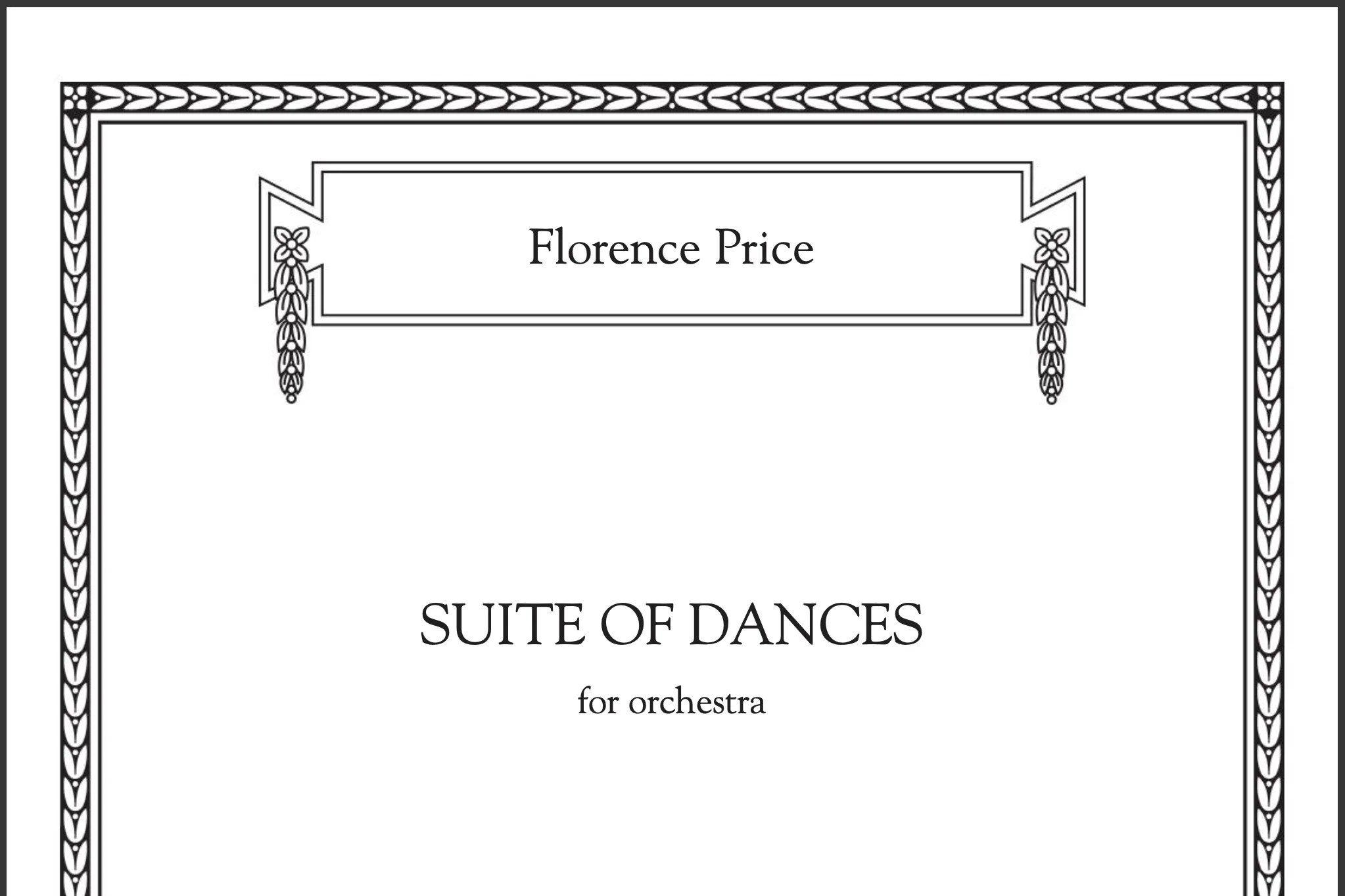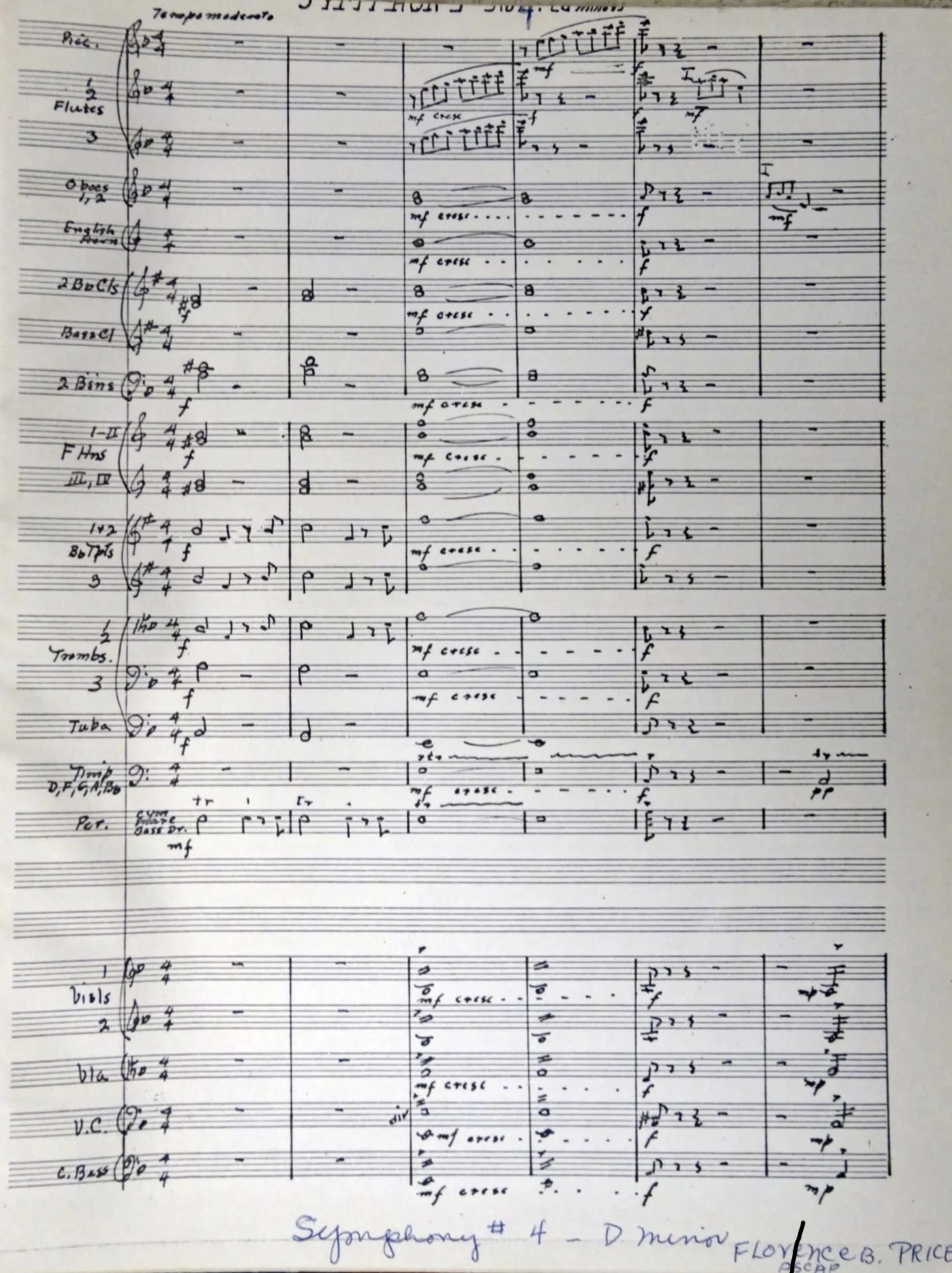65 years after her death, one of the twentieth century’s most important voices has finally begun to receive the attention she so richly deserves. Florence Beatrice Price, born in Little Rock, Arkansas in 1887, was the first African-American woman to have a composition performed in concert by a major American orchestra. Her first symphony was performed by the Chicago Symphony Orchestra under Frederick Stock at the 1933 Chicago World’s Fair. Prior, she studied organ and piano at the New England Conservatory and caught the attention of composer George Chadwick, who was also the Director of NEC at the time. Chadwick took Price on as a composition student.
After her death in 1953, Price maintained a loyal following among a small but dedicated group of scholars, performers, organizations, and connoisseurs who diligently put forward a range of scholarly editions, papers, recordings, documentaries, and performances carrying the torch forward. However, 2018 has, by any standard, been a banner year for the composer. Here are a list of the significant developments that have collectively helped to advance Price’s music into the public sphere as never before.
I’ve collected seven of the defining moments of 2018 that helped make this Florence Price’s breakout year.
Media Coverage
Two significant stories in the Times and The New Yorker came out within days of one another in early February of this year. A mention in one of the nation’s taste-making publications is a point of pride for any composer. To receive a mention as a classical composer in the year 2018 is decreasingly uncommon and increasingly significant. To have an entire article written about a composer is all the more special. It follows that these twin articles served to ignite a level of interest and public consciousness about Price and her music that surpassed all previous reach. In fact, I am among the many who jumped on the Price bandwagon thanks to these stories.
While this coverage was doubtless a net good for spreading awareness, many scholars, music journalists, and other interested parties engaged in a lively discussion on Twitter and the blogosphere about taking great care with the term “rediscovered” in the context of Florence Price. In particular, Price scholars such as Kori Hill and Doug Shadle took time to explain why it is inappropriate to refer to Price herself as a “rediscovered “composer, primarily because it has the effect of erasing the excellent scholarship and performance efforts made by individuals such as Rae Linda Brown, Mei Ann Chen, and Barbara Garvey Jackson, to name only a few. What is conflated in these headlines is the fact that a large cache of Price’s works were lost and later rediscovered.
Rae Linda Brown’s efforts are particularly important and her end, particularly tragic: Brown passed away in 2017, only months before the flowering of activity seen throughout 2018. A moving tribute was recently published in the Bulletin of the Society for American Music.
Read More
Alex Ross: The Rediscovery of Florence Price
Micaela Baranello: Welcoming a Black Female Composer Into the Canon. Finally.
A Major Premiere
The composers with the most staying power often tend not to peak during their own lifetime. Mahler, Schubert, and Mozart are just a few of the composers that come immediately to mind who did not have the opportunity to hear their last and best works performed during their lifetimes. Price was no exception and her Symphony No. 4 was among those many great works she did not get to hear performed. However, in this case, it was a full 65 years after Price’s death before this work would grace a stage. John Jeter led the Ft. Smith Symphony in this performance in May. The recording of this work will be released on the Naxos label in January of 2019.
Related
Documents Galore
At the center of the world of Price Scholarship sits the Florence Price Special Collection at the University of Arkansas. This collection houses the largest number of documents, manuscripts, and Price ephemera of any library worldwide. The physical location is:
1 University of Arkansas
Fayetteville, AR 72701
Perhaps equally as important, a far-reaching collection of these documents have been digitized and are available freely to the public on the University of Arkansas website; no academic login required. This project was completed in April 2018. I have had a wonderful time exploring these incredible archives and have discovered a range of interesting content. This one brief quote caught my attention as it pertains to Price’s lifetime commitment to infusing a large number of her works with Folk Songs (specifically, African-American Spirituals) and other folk-like musical elements (such as the Juba dance rhythms).
“A good composer should be a folk-singer.” - Florence Price (source)
Explore
University of Arkansas Digital Collections - Florence Price
Song Scholarship
Price scholar Marquese Carter published his dissertation this December in which he provides analysis and context for many of Price’s terrific art songs, including “Feet o’ Jesus,” “Hold Fast to Dreams,” “Sympathy,” “The Washerwoman,” and “My Neighbor.” This significant work will doubtless serve as required reading for future scholarship and performance of these delicately handcrafted songs.
Read More
Carter, Marquese. The Poet and Her Songs: Analyzing the Art Songs of Florence B. Price. Diss. Indiana University, 2018. (link)
Schirmer Catalogue
As I recently discussed, Florence Price’s catalogue is now being published by G. Schirmer. I have received private signals that seem to indicate that some of her works, and perhaps many of them, are not owned by Schirmer at this point, despite the press release and Times article to that effect. That said, a number of works have already become available for rent, including Price’s Fourth Symphony and the three-movement suite, Ethiopia’s Shadow in America.
Read More
Premiere Recording
Like her Fourth Symphony, Price’s Violin Concertos only recently saw the light of day. The world premieres took place just last year, and their premiere recording appeared just this year. Violinist Er-Gene Kahng soloed with the Janaček Philharmonic.
Purchase
The Interpretive Landscape
As important as a first recording is for the future life and health of a new or recently premiered work, perhaps more important is the second and third recording. Together with the score, they begin to open up a documented performing tradition, an interpretative landscape which future interpreters can rely upon as they consider past choices and forge ahead as they make their own.
It is with this in mind that 2018 becomes a great year for the interpretative life of Price’s Piano Sonata in E Minor. Price scholar and performer Samantha Ege released the third commercial recording, and the first in 20 years, of Price’s most robust work for solo piano.
Purchase
Other Happenings
Any year-end best-of list will almost definitionally cause angst for the important events that it omits. This list will be no different. Any number of excellent concerts deserve mention for either being the first, best, or one of the first (or best) performances, recordings, videos, etc. of a given work. Brian Wise offered an excellent roundup of a number of these events in his Wall Street Journal article and on his blog. Other projects, such as a recent concert of choral music at Vanderbilt University, are unique for exploring genres that have so far received comparitvely less attention among Price’s collected works. These developments and many others are important contributors to the past year, in part because they demonstrate that the ripples are finally being felt. I predict that future years will have perhaps a maddening array of important developments and that any attempt at a list would be hopelessly incomplete, but that just speaks all the more to the joy that this singular voice brings to all who have taken the time to get to know her music.









the world will get to experience Price’s final statement in the form in the new year. Thanks to Schirmer’s rapid movements, we will be able to do so with score in hand.